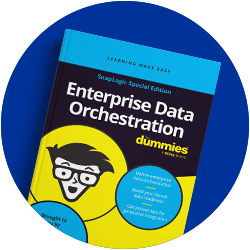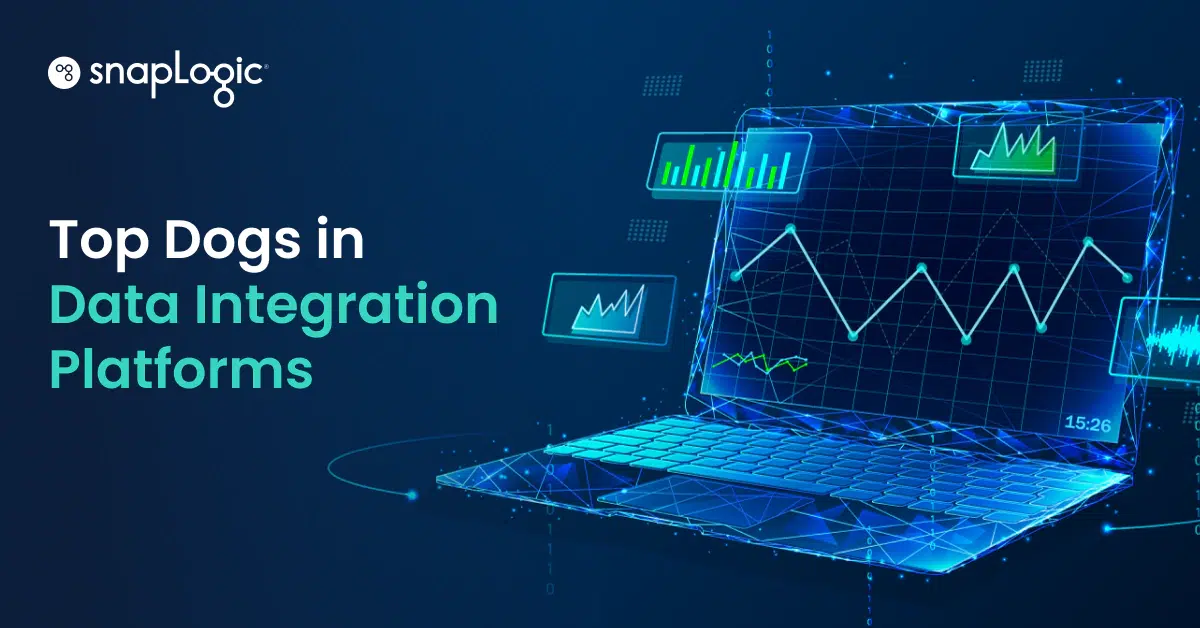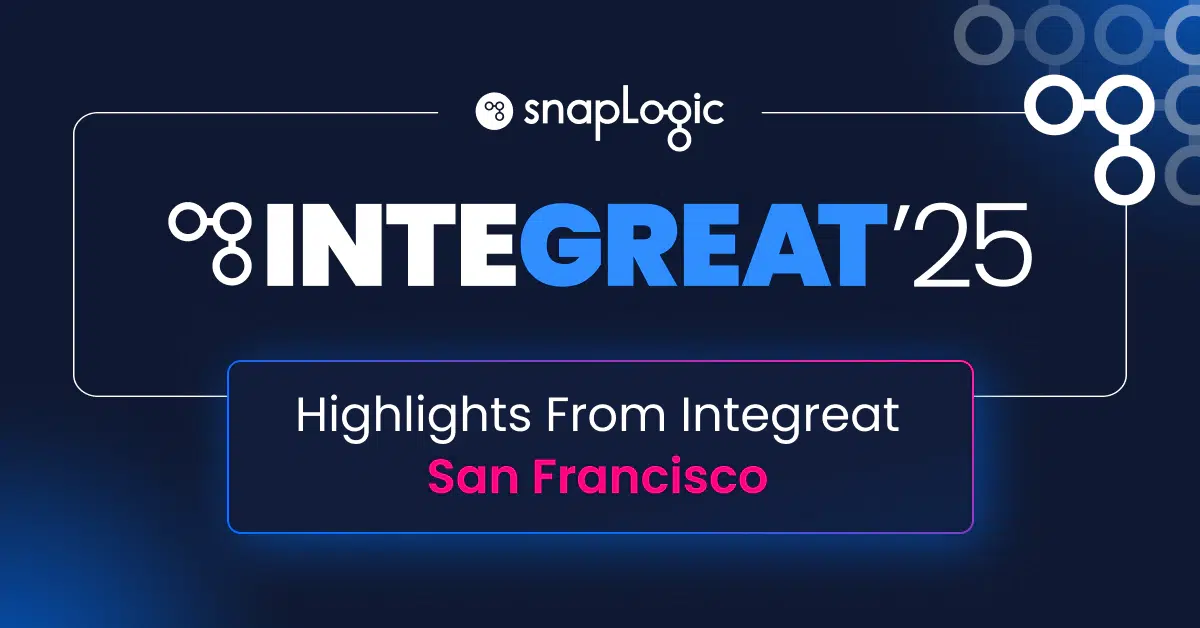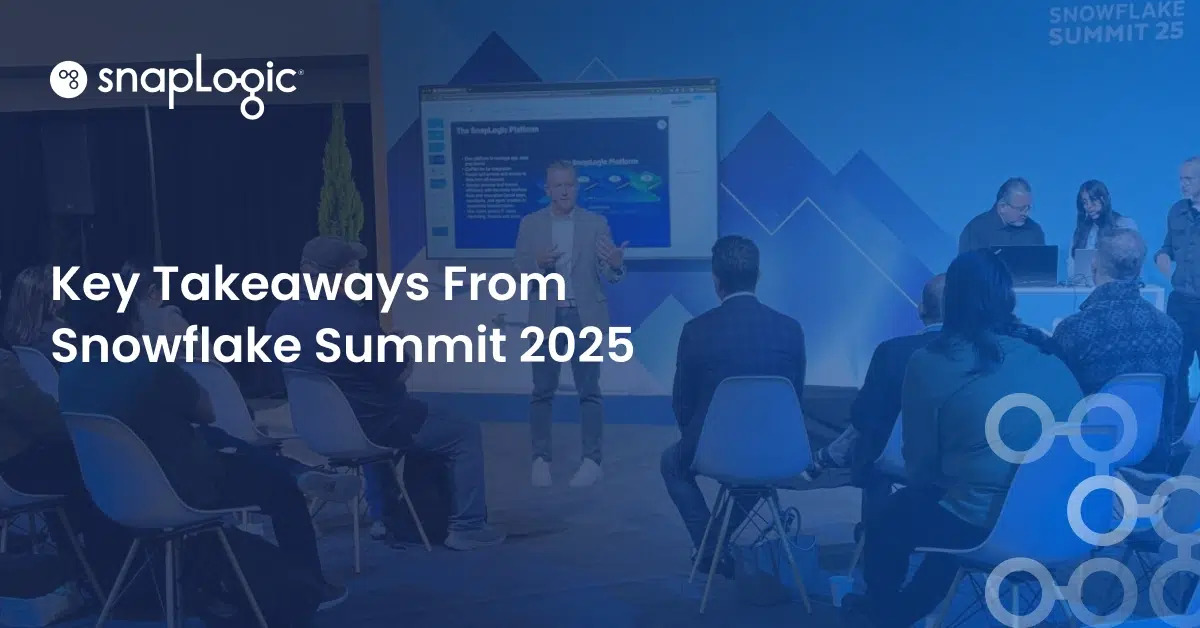Data drives every decision, so enterprises must integrate, transform, and move it quickly to stay agile. As organizations expand cloud adoption, build AI/ML models, and embrace composable architectures, data integration isn’t a back-end chore anymore. It’s the engine of innovation.
That’s where modern data integration platforms come in. Today’s solutions must handle real-time data flows, support multi-cloud and hybrid environments, and enable teams to deliver clean, governed, analytics-ready data fast. But with so many tools on the market, and growing overlap with iPaaS, data fabric, and lakehouse ecosystems, choosing the right one isn’t easy.
In this blog, we explore the top data integration platforms in 2025, how they differ, and what to consider when building a future-ready data foundation.
What is a data integration platform?
A data integration platform is a set of technologies that enable organizations to combine data from different sources into a unified view, often to support analytics, operations, governance, or AI workloads. Modern platforms go beyond ETL (extract, transform, load) and now include:
- Real-time and event-driven streaming
- Low-code/no-code pipeline design
- Cloud-native scalability
- Built-in lineage and metadata management
- AI-assisted transformation and automation
- Support for hybrid and multi-cloud data flows
These combined capabilities enable organizations to quickly provide reliable, actionable data throughout intricate environments.
Best data integration platforms
Here’s a comprehensive list of notable data integration tools currently available on the market, covering a mix of traditional ETL/ELT, cloud-native platforms, iPaaS, and emerging AI-enabled solutions.
SnapLogic

SnapLogic is a cloud-native platform that combines data integration, application integration, and API orchestration into a single low-code experience. The solution is metadata-aware, supports AI-assisted pipeline creation via SnapGPT, and includes AgentCreator to build autonomous AI agents using integrated data pipelines.
- Deployment: Cloud-native
- Data Processing: Batch, real-time, streaming
- AI/Automation: SnapGPT, predictive mapping, AgentCreator
- Lineage & Metadata: Strong (OpenLineage, custom metadata)
- Usability: Very strong (low-code/no-code interface)
Best for: Organizations seeking composability, AI-readiness, and usability across IT and business teams.
Informatica

A long-standing enterprise data leader, Informatica offers deep functionality, governance, and AI via its CLAIRE engine. However, it often comes with higher complexity and implementation costs, especially post-Salesforce acquisition.
- Deployment: Cloud, hybrid, on-prem
- Data Processing: Batch, streaming
- AI/Automation: CLAIRE AI, rule-based automation
- Lineage & Metadata: Strong (catalog and governance-focused)
- Usability: Moderate (steeper learning curve for technical users)
Best for: Large, regulated enterprises with complex governance requirements and the resources to manage platform overhead.
Talend (Qlik)
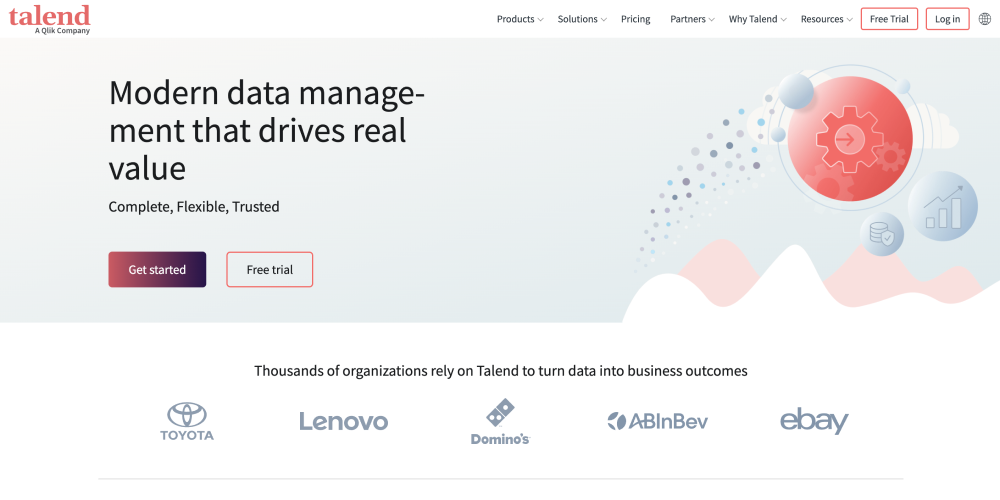
Strong on data quality, cleansing, and profiling, Talend helps organizations deliver trusted data for analytics. Less focused on real-time streaming or agent-based automation.
- Deployment: Cloud, hybrid
- Data Processing: Batch, ELT, some real-time
- AI/Automation: Automation for data quality and cleansing
- Lineage & Metadata: Good (stewardship, catalog integration)
- Usability: Moderate
Best for: Enterprises prioritizing governance and quality for analytics workloads.
Matillion
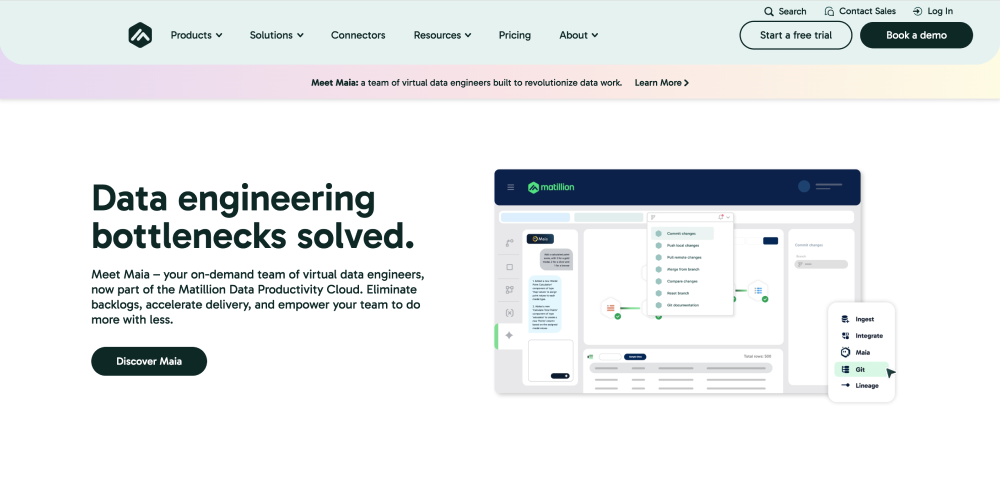
Matillion is designed for data teams leveraging cloud data warehouses, providing intuitive ELT tools that streamline in-database transformations. It focuses on accelerating analytics workflows with easy-to-use interfaces tailored for data engineers.
- Deployment: Cloud-native
- Data Processing: ELT, in-warehouse transformations
- AI/Automation: Basic transformation automation
- Lineage & Metadata: Moderate (lineage via logs)
- Usability: Strong (UX focused on data engineers)
Best for: Data engineering teams looking to accelerate cloud analytics with streamlined ELT and a user-friendly interface.
Fivetran

Built for speed and simplicity in analytics data pipelines, Fivetran’s fully managed ELT model gets data from SaaS apps into warehouses with minimal effort—but isn’t designed for operational or cross-domain integrations.
- Deployment: Cloud-native
- Data Processing: ELT to cloud data warehouses
- AI/Automation: Limited (scheduling, schema drift handling)
- Lineage & Metadata: Light (minimal contextual metadata)
- Usability: Very strong (hands-off user experience)
Best for: Data teams needing zero-maintenance ELT for BI and dashboards.
Azure Data Factory
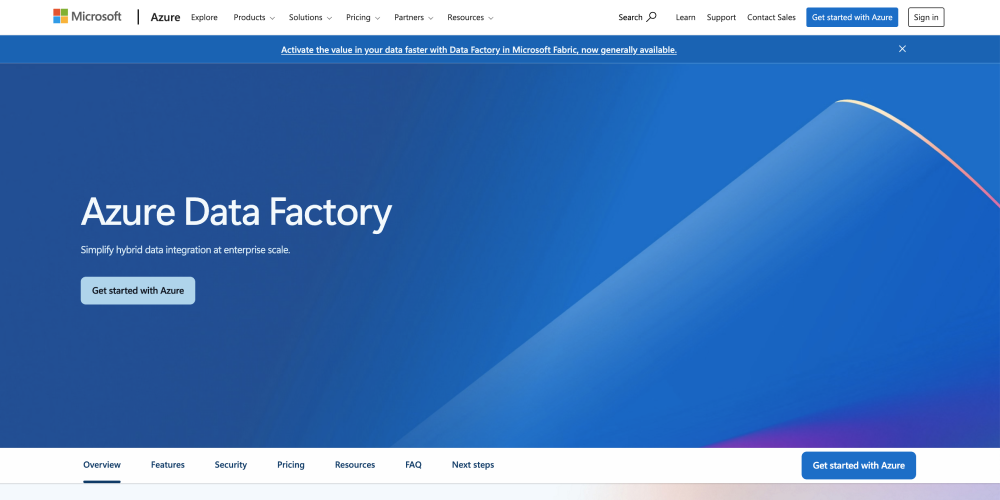
Microsoft’s Azure Data Factory is an enterprise-grade ETL and data orchestration service that integrates natively with Azure’s cloud ecosystem. It’s ideal for organizations invested in Microsoft technologies seeking scalable, hybrid data pipelines.
- Deployment: Cloud, hybrid
- Data Processing: Batch, some streaming
- AI/Automation: Via Azure Synapse and Logic Apps
- Lineage & Metadata: Moderate (with Azure Purview)
- Usability: Medium (developer-focused experience)
Best for: Enterprises leveraging Microsoft Azure that require flexible, scalable hybrid data orchestration.
AWS Glue
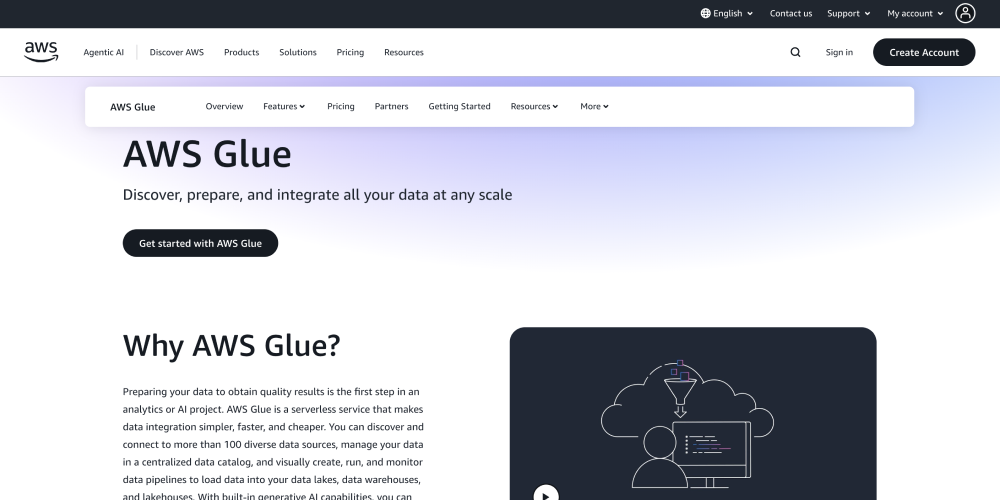
AWS Glue is a serverless ETL service designed to simplify big data processing on AWS. It provides scalable data integration with automation features, best suited for teams comfortable with cloud-native, code-centric workflows.
- Deployment: Cloud-native
- Data Processing: Batch, event-driven
- AI/Automation: Job automation, schema evolution
- Lineage & Metadata: Basic (requires manual configuration)
- Usability: Moderate (more technical and code-heavy)
Best for: AWS-centric teams seeking serverless, scalable ETL for big data workloads with developer control.
Google Cloud Dataflow
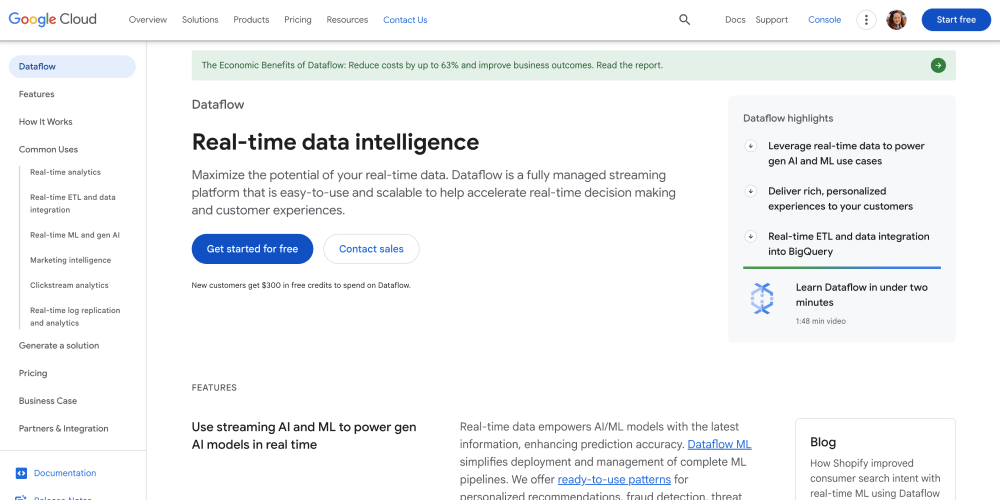
Built on Apache Beam, Dataflow offers unified real-time and batch data processing with tight integration to Google Cloud AI and analytics services. It appeals to developers building scalable, event-driven pipelines with advanced processing needs.
- Deployment: Cloud-native
- Data Processing: Streaming, batch
- AI/Automation: Integrates with GCP AI tools (BigQuery ML, Vertex AI)
- Lineage & Metadata: Moderate
- Usability: Technical (developer-first)
Best for: Developers requiring scalable, real-time data processing tightly integrated with Google Cloud AI.
IBM DataStage
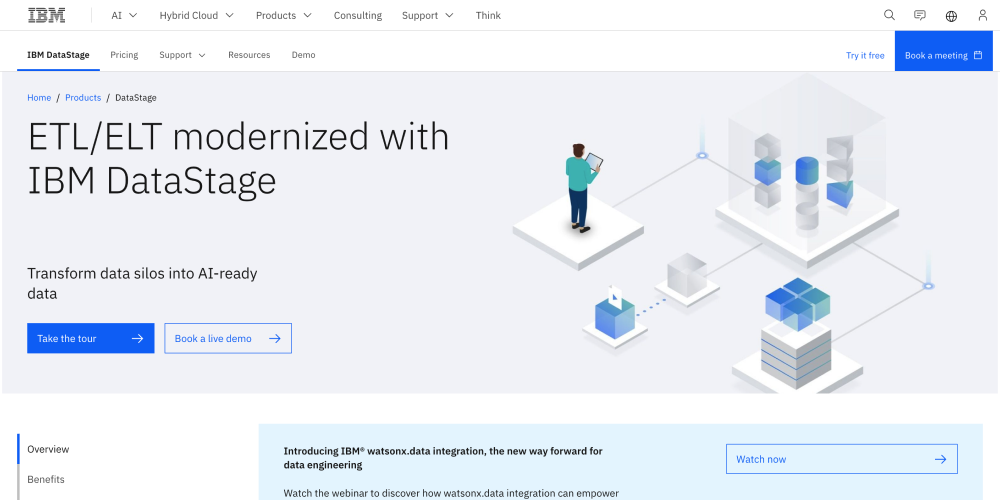
A proven enterprise ETL solution, DataStage has evolved to support hybrid deployments with AI enhancements. It’s best suited for large organizations with mature data environments and the resources to manage sophisticated integration projects.
- Deployment: Cloud, on-prem
- Data Processing: Batch, streaming
- AI/Automation: Basic Watson AI integration
- Lineage & Metadata: Strong (governance-focused)
- Usability: Complex (requires specialized skills)
Best for: Large enterprises needing a hybrid-capable, governance-focused ETL platform with AI integration.
Oracle Data Integrator (ODI)
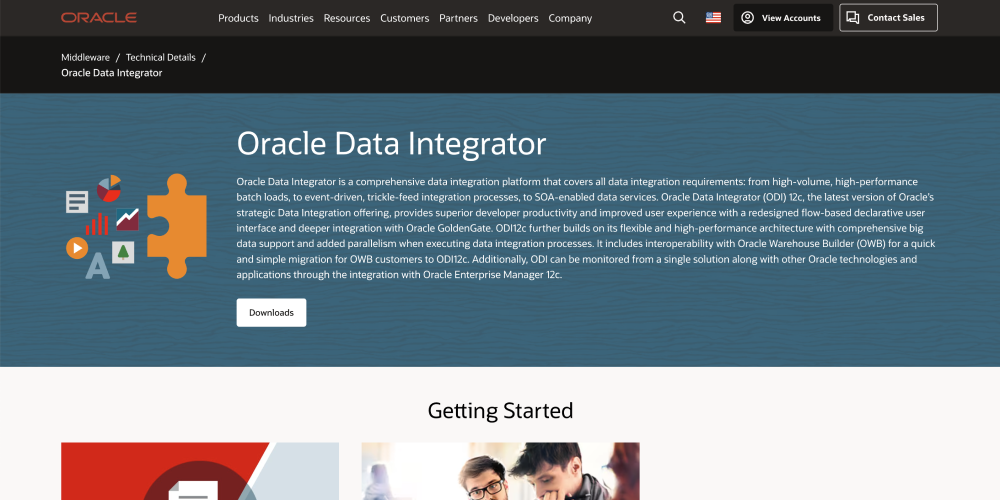
ODI is a high-performance ELT platform optimized for Oracle databases, combining automation with flexibility. It fits enterprises deeply invested in Oracle technologies, requiring efficient data integration within their existing ecosystems.
- Deployment: Cloud, on-prem
- Data Processing: Batch
- AI/Automation: Moderate (no-code mappings, built-in automation)
- Lineage & Metadata: Strong (native to Oracle ecosystem)
- Usability: Medium
Best for: Oracle-centric enterprises that need a performant ELT tool integrated into their ecosystem.
The future of data integration
As AI agents, real-time decision-making, and composable architectures go mainstream, data integration platforms must evolve beyond pipelines into dynamic systems of intelligence. That means:
- Lineage-first design for impact analysis and governance
- Low-code automation for speed and scalability
- Unified platforms that bring together data, apps, APIs, and AI
- Metadata-rich, AI-ready architecture to fuel autonomous systems
Enterprises that adopt modern integration platforms today will be better positioned to support innovation tomorrow.
Ready to build a smarter data foundation?
Choosing the right platform isn’t just about technical specs. It’s about enabling agility, innovation, and trust across the organization. SnapLogic brings these capabilities together in a unified, AI-powered platform built for the future.
See how SnapLogic’s data integration works with a virtual tour.

